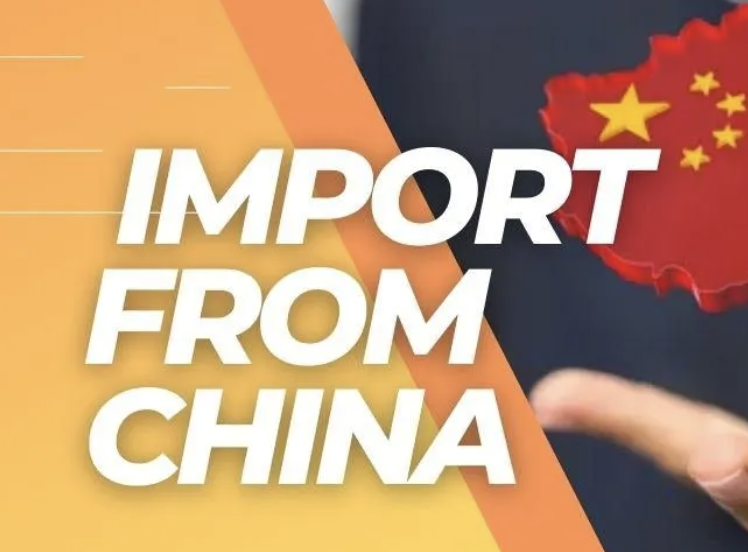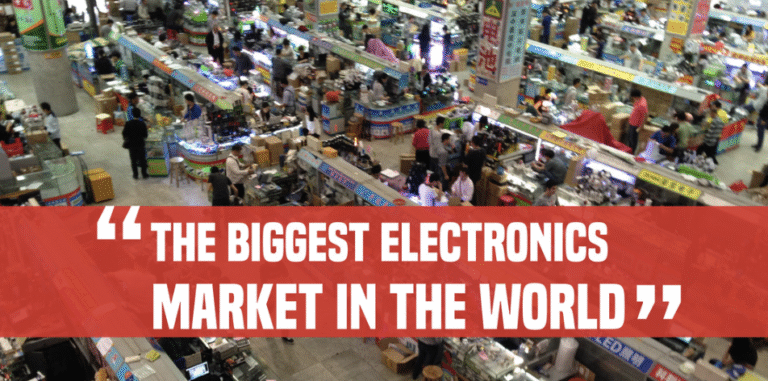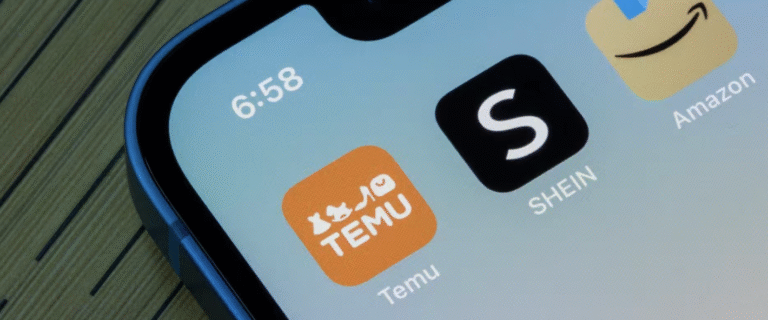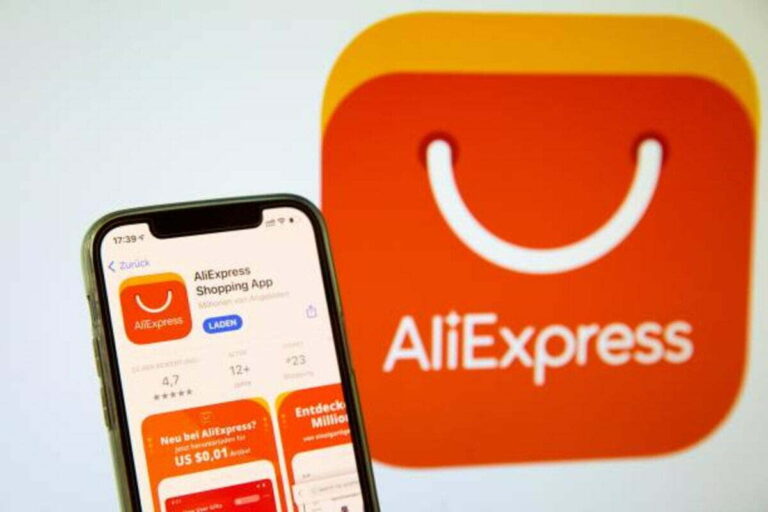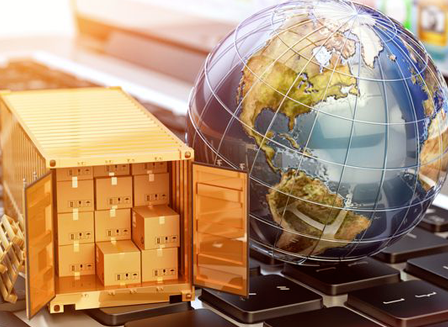How to Import from China in 6 Simple Steps: A 2025 Guide
Thinking of sourcing products from China? You’re not alone. China is the world’s manufacturing powerhouse, producing everything from gadgets and apparel to industrial machinery and home goods.
But while the products may be abundant and cheap, importing them isn’t as simple as adding items to a cart and clicking “Buy Now.”
If you’re a business owner, eCommerce seller, or someone dreaming of launching a product line, learning how to import from China in 6 steps can make or break your success.

From choosing the right products to handling international shipping and customs, each step is critical. The good news? It’s completely doable—even for beginners.
In this article, we’ll walk you through a simplified 6-step import process to help you start your journey with confidence. And before you dive into that big order—Read This Review Before You Buy.
Trust us, knowing what to look out for can save you thousands in errors and delays.
Let’s dive into the details and show you how to navigate the importing maze like a pro.
Table of Contents
Step 1: Decide What to Import
The first step might sound obvious, but it’s where most new importers mess up: choosing the wrong product. You can’t just pick something because it’s trending or looks cool. You need a product that’s in demand, profitable, and easy to manage.
How to Choose the Right Product
Start by exploring product niches that interest you or that you already understand. This gives you an edge in spotting quality and identifying customer pain points. Then, ask yourself:
- Is there consistent demand?
- Can I add value to this product?
- Are there too many competitors?
Tools to Validate Product Ideas
Use tools like:
- Google Trends: See if demand is increasing or falling.
- Jungle Scout or Helium 10: Great for analyzing Amazon products and seeing real sales data.
- Alibaba’s Trending Products: See what suppliers are pushing now.
Avoid These Product Types (as a beginner)
- Electronics (complex and high return rate)
- Perishables (difficult to ship and store)
- Heavy or bulky items (expensive shipping)
- Patented or branded products (legal issues)
Remember: start small, test demand, and scale from there. Importing from China is a marathon, not a sprint.
Step 2: Find a Reliable Supplier

Now that you’ve picked your product, the next mission is finding someone to make it—and make it well. This is where many hopeful entrepreneurs fall into the trap of slick websites and fake factories.
Where to Look for Suppliers
These are the top online platforms to start your search:
- Alibaba: The biggest sourcing marketplace in China. Filter by Gold Supplier, Trade Assurance, and Verified Supplier for safety.
- Global Sources: Focuses more on verified manufacturers, especially for electronics and industrial goods.
- Made-in-China: Similar to Alibaba, sometimes features better pricing for bulk orders.
Manufacturer vs. Trading Company
- Manufacturers make the product in-house. You get better pricing and more control but might face higher MOQs (Minimum Order Quantities).
- Trading Companies are middlemen. Easier to deal with, lower MOQs, but often at higher prices.
If you want control over the supply chain and branding, go with manufacturers. If you’re testing or unsure, a trading company might work better.
The Role of Sourcing Agents
If browsing hundreds of suppliers feels overwhelming—or you want boots on the ground—consider working with a sourcing agent like Simoosourcing.
Simoosourcing helps you:
- Find verified factories
- Negotiate pricing
- Perform quality checks
- Handle communication and logistics
Working with them is like having a local expert guiding your every move. For many importers, they’re the key to stress-free China sourcing.
Step 3: Request Samples and Verify Quality

Once you’ve shortlisted suppliers, don’t make the rookie mistake of jumping straight into a bulk order. Always request a sample first. This step is your safety net against poor quality, wrong specs, or outright scams.
What to Look for in a Sample
- Build quality: Does it look and feel as advertised?
- Functionality: Test it like your customers will.
- Packaging: Is it retail-ready or just in bubble wrap?
- Details: Check sizes, colors, logos, and labeling.
If the sample isn’t what you expected, talk to the supplier. Sometimes it’s a misunderstanding; other times, it’s a red flag.
What Red Flags Should You Watch Out For?
- Poor communication or delayed responses
- Refusal to send samples or provide certifications
- Requests for money outside secure payment platforms (like Western Union)
Set Clear Quality Benchmarks
When placing a sample order, include your product specifications document (spec sheet):
- Materials
- Dimensions
- Tolerances
- Packaging requirements
- Labeling & barcodes (if needed)
This document can later be attached to your contract to hold the supplier accountable. It’s your proof if quality issues arise.
Requesting samples might cost $20–$100 depending on the product—but it’s the best insurance policy you can buy.
Step 4: Place Your Order and Negotiate Terms

You’ve found the perfect supplier, and the sample checks out. Now it’s time to place your order—but not so fast! There are still a few things to hammer out: price, MOQ, lead time, and Incoterms.
Key Terms to Clarify Before Ordering
- MOQ (Minimum Order Quantity): Most factories won’t produce fewer than 100–500 units.
- Lead Time: Production typically takes 15–45 days. Confirm this in writing.
- Payment Terms: Common options are 30/70 (30% upfront, 70% after inspection) or 100% in advance for smaller orders.
Understanding Incoterms (International Commercial Terms)
These terms define who’s responsible for shipping and risks:
- FOB (Free On Board): Supplier delivers goods to the port. You handle freight and insurance.
- CIF (Cost, Insurance, Freight): Supplier handles shipping to your port, including insurance.
- EXW (Ex Works): You pick up the goods from the factory.
For beginners, FOB or CIF is usually safer and easier.
Use a Purchase Agreement
This should include:
- Product details
- Pricing and quantity
- Packaging instructions
- Shipping terms
- Penalties for late delivery or quality failures
A solid agreement helps you avoid disputes and sets the tone for a serious business relationship.
Step 5: Handle Shipping and Customs Clearance
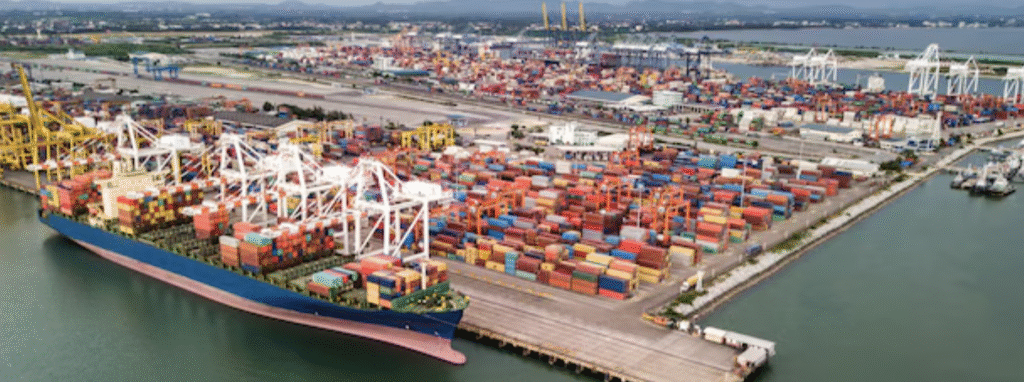
With your order in production, it’s time to think about how you’ll actually get it. International shipping is where many beginners freeze up—but it’s simpler than you think once you break it down.
Choose the Right Shipping Method
- Air Freight: Fast (5–10 days), but expensive. Best for small, high-value goods.
- Sea Freight: Cheaper, slower (20–40 days). Best for bulk shipments.
- Courier (DHL, FedEx): Great for samples or very small orders.
Tip: If your order is under 2 CBM (Cubic Meters), consider LCL (Less than Container Load) shipping to save costs.
Use a Freight Forwarder
Freight forwarders are like travel agents for cargo. They’ll:
- Book your shipping
- Handle customs paperwork
- Arrange local delivery
For beginners, using a freight forwarder can eliminate 90% of the stress involved in shipping.
Prepare for Customs
Make sure you have:
- Commercial Invoice
- Packing List
- Bill of Lading (for sea freight) or Air Waybill
- Import license (if required in your country)
- HS Codes for your product
You’ll also need to pay import duties and VAT, which vary by country. Use tools like SimplyDuty or your government’s customs website to estimate.
Step 6: Receive Goods and Start Selling
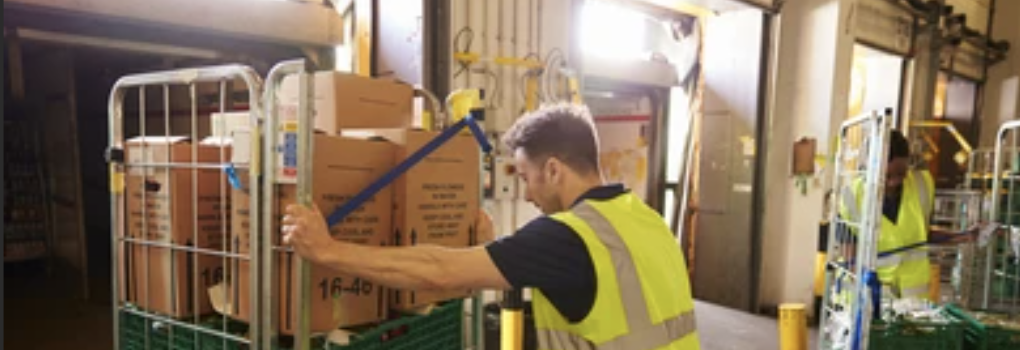
You’ve cleared customs, the cargo is on its final leg, and your warehouse or living room (for smaller importers!) is ready. But your job isn’t done. Step 6 of how to import from China in 6 steps is all about inspection, storage, and actually turning inventory into income.
Inspect the Shipment
Even if you checked samples and used a quality inspection service in China, it’s smart to give the final shipment one more look when it arrives. Focus on:
- Packaging condition
- Quantity verification
- Product quality and consistency
- Any missing items, broken goods, or damage
If there are issues, document everything with photos or videos. Depending on the severity, you might be eligible for a partial refund or credit on your next order.
Inventory Management
Now that your goods are safe and sound, consider how you’ll manage and store them. Here are your options:
- Self-storage: If you’re starting small, store products at home or in a small warehouse.
- Third-Party Logistics (3PL): Outsource storage, fulfillment, and even returns.
- Amazon FBA (Fulfillment by Amazon): Great if selling on Amazon. You ship your inventory directly to Amazon warehouses.
Don’t forget about labeling, SKU tracking, and barcode scanning. Proper inventory systems help you avoid stockouts and overordering.
Start Selling
Where you sell depends on your niche:
- Amazon: Great for private-label or white-label products.
- eBay: Ideal for unique, seasonal, or limited stock items.
- Shopify/WooCommerce: Perfect for building your own brand.
- Etsy: Best for handmade or creative goods.
- Wholesale/B2B: Sell in bulk to retailers.
Now that your store is live and your products are in hand, it’s time to promote, advertise, and fulfill orders. Congratulations—you’ve successfully imported from China and launched your business!
Read This Review Before You Buy: Common Pitfalls to Avoid

Before you place a big order or send your first international payment, read this review before you buy. Importing from China can be profitable, but it comes with real risks if you’re unprepared.
1. Miscommunication with Suppliers
Most Chinese suppliers speak decent English—but it’s often functional, not fluent. Misunderstandings can easily happen. Always:
- Use clear, simple language
- Include diagrams and specs in writing
- Confirm details multiple times
- Avoid slang or complex idioms
Don’t assume anything unless it’s written and acknowledged.
2. Skipping Sample and Quality Checks
Too many new importers skip samples to “save time” or “cut costs.” Big mistake. This is how you end up with 500 faulty units or the wrong size/color. Always get a sample, and ideally, hire a third-party inspector before shipping the bulk order.
3. Underestimating Shipping Costs
Shipping isn’t just about moving a box from A to B. It includes:
- Freight
- Insurance
- Port fees
- Duties
- Last-mile delivery
Use freight forwarders for accurate quotes and buffer at least 10–15% extra in your logistics budget.
4. Ignoring Legal Compliance
If your product requires certifications (like CE, RoHS, FCC, FDA), get them. Don’t assume your supplier already complies. If your shipment gets stopped at customs, it could be seized or returned—on your dime.
5. Paying with Unsafe Methods
Avoid risky payment methods like Western Union, crypto, or direct bank transfers to individuals. Use:
- Alibaba Trade Assurance
- PayPal (for small orders)
- LC (Letter of Credit for large orders)
- Secure escrow services
The right preparation saves you time, money, and heartache. Don’t skip these checks just because you’re in a hurry to launch.
Why Importing from China is Still a Smart Move

Even with global uncertainty, rising shipping costs, and new trade regulations, importing from China remains one of the smartest business moves for entrepreneurs worldwide. Here’s why:
1. Cost Efficiency
Chinese factories still offer unbeatable pricing due to:
- Economies of scale
- Skilled labor at lower costs
- Vertical integration (suppliers, parts, and manufacturers all nearby)
Even after shipping and taxes, the landed cost of most products is lower than producing locally.
2. Manufacturing Expertise
With decades of experience and constant innovation, Chinese manufacturers are not just cheap—they’re good. Whether you need customized molds, advanced electronics, or top-tier packaging, you’ll find experts who specialize in exactly what you want.
3. Supply Chain Infrastructure
China’s manufacturing hubs are designed to scale. From raw materials to assembly lines to global ports like Shenzhen, China’s supply chain is faster and more efficient than most countries can dream of. You can scale up from 100 units to 100,000 units without changing suppliers.
4. Product Variety and Customization
Want to create a new product category? Looking to private label or white-label an existing bestseller? Chinese factories can tweak materials, packaging, design, and even create exclusive tooling—something that would cost tens of thousands elsewhere.
5. Access to Global Markets
China’s ports are directly connected to global trade routes. You can ship from Guangdong to Los Angeles, Sydney, or Rotterdam in weeks. And with services like Alibaba and platforms like Simoosourcing, even small sellers now have the tools to compete globally.
Yes, importing from China takes work. But with the right approach, it can become the engine that drives your business success for years.
Role of Sourcing Agents Like Simoosourcing
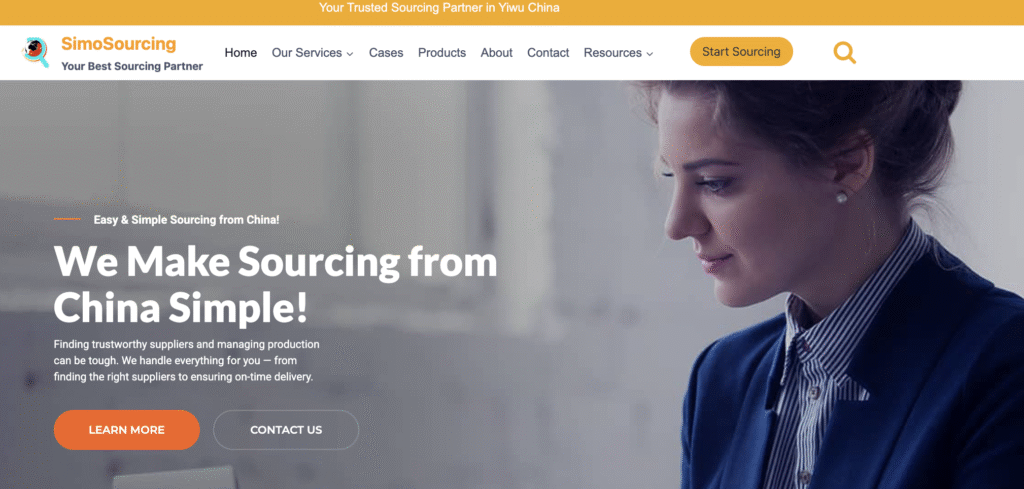
Sourcing agents aren’t middlemen—they’re your success partner. If you want a smooth, efficient, and reliable importing experience from China, Simoosourcing is one of the top agencies you should know about.
What Does Simoosourcing Do?
Based in China, Simoosourcing acts as your dedicated partner, offering services such as:
- Identifying and verifying reliable suppliers
- Requesting samples and comparing factories
- Negotiating better prices and MOQs
- Inspecting production and managing timelines
- Handling customs and shipping coordination
Why Use a Sourcing Agent?
Let’s be real: if you don’t speak Mandarin, aren’t in the country, and don’t know what “SCAC code” or “HS tariff schedule” means—you need help. A sourcing agent saves you time, prevents scams, and gives you leverage with suppliers.
Benefits of Working with Simoosourcing
- Transparent pricing: No hidden commissions
- Factory connections: Access to manufacturers not listed online
- Localized expertise: Understands local laws, holidays, and manufacturing cycles
- Custom development: Want to create your own brand? They’ll help develop, design, and package your dream product.
If you’re serious about importing from China and building a long-term business, working with Simoosourcing is one of the smartest investments you can make.
Compliance & Legal Considerations
When you’re importing goods from China, crossing international borders comes with responsibilities—and legal consequences if you’re not careful. Compliance isn’t just about following the rules; it’s about protecting your business and reputation.
Understand Product Certifications
Depending on your country and the product category, you may need one or more of the following certifications:
- CE Marking (Europe) – Required for electronics, toys, medical devices
- FCC Certification (USA) – Mandatory for electronic devices
- FDA Approval (USA) – Needed for food, cosmetics, health products
- RoHS Compliance – Ensures products are free from hazardous substances
- ISO Certifications – Reflect manufacturer quality standards
Ask your supplier to provide proof of compliance before you order. Don’t rely on verbal claims—ask for documentation and test reports.
Check Import Restrictions
Every country has a list of restricted or prohibited imports. Common restricted items include:
- Counterfeit or trademarked goods
- Used electronics
- Certain chemicals or materials
- Specific agricultural products
Use your government’s customs website to look up restrictions, or consult your freight forwarder or sourcing agent.
Labeling & Packaging Laws
Many countries have strict requirements on how imported products should be labeled. These include:
- Country of origin (e.g., “Made in China”)
- Safety instructions and warning labels
- Language requirements (English, French, etc.)
- Barcodes and product codes
Missing or incorrect labels can lead to goods being seized at customs. Your supplier or Simoosourcing can help make sure everything’s compliant before shipping.
Trademark & Patent Protection
If you’re importing branded products or creating your own, check whether those designs or logos are protected in your target market. Use tools like the USPTO database or EUIPO search to avoid legal battles down the line.
Legal compliance might not be the most exciting part of importing—but skipping it could shut down your business before it starts. Treat it as a top priority.
Tools and Resources for Importers
Importing from China is a lot easier when you know which tools to use. The right platforms can save you time, prevent mistakes, and improve profitability.
Product & Market Research Tools
- Jungle Scout / Helium 10 – Analyze Amazon data to find best-selling products.
- Google Trends – Check seasonal demand or market trends.
Supplier & Factory Platforms
- Alibaba.com – Largest B2B platform; great for finding suppliers.
- Made-in-China.com – Good for smaller or niche product categories.
- 1688.com – Chinese-language site with ultra-low prices (use via an agent like Simoosourcing).
Sourcing & Quality Tools
- Simoosourcing – Full-service agent offering supplier verification, negotiation, and inspection.
- QIMA / AsiaInspection – Book third-party inspections to check product quality.
Shipping & Customs Tools
- Flexport / Freightos – Get real-time quotes for sea and air freight.
- SimplyDuty.com – Estimate duties and taxes based on HS Code and destination.
- ImportYeti – See what other companies are importing from China.
Legal & Compliance Resources
- USPTO – Trademark and patent checks in the U.S.
- EUIPO – Intellectual property search in the EU.
- CBP (Customs and Border Protection) – U.S. import regulations.
These tools are your digital toolkit for becoming a savvy importer. Don’t try to wing it—importing is a serious business, and the right tools are your armor.
Conclusion
Importing from China is no longer a secret reserved for giant corporations. With the rise of global e-commerce and platforms like Alibaba, anyone can source products, negotiate deals, and build a profitable business—if they follow the right steps.
Let’s recap how to import from China in 6 steps:
- Decide what to import – Focus on products with demand and manageable logistics.
- Find a reliable supplier – Use Alibaba or work with a sourcing agent like Simoosourcing.
- Request samples – Test product quality and verify what you’re buying.
- Place your order & negotiate terms – Know the language of Incoterms and protect yourself with contracts.
- Handle shipping & customs – Partner with freight forwarders and prepare all required documents.
- Receive goods & start selling – Inspect inventory, manage storage, and launch on your preferred platform.
Read This Review Before You Buy anything blindly or rush into your first order. Take your time, stay informed, and most importantly—treat this as a long-term business, not a get-rich-quick scheme.
With smart planning and the right support system (like Simoosourcing), importing from China can open the door to financial independence and entrepreneurial freedom.
FAQs About How to Import from China
1. Is importing from China profitable?
Yes, especially if you pick the right product, negotiate well, and manage your shipping costs. Many small businesses and Amazon sellers make excellent margins sourcing from China.
2. How long does the shipping process take?
Shipping by sea typically takes 20–40 days, while air freight can arrive within 5–10 days. Add 3–7 days for customs clearance and delivery.
3. Can I import small quantities from China?
Yes. Many suppliers accept low MOQs (100–500 units), especially if you use a trading company or sourcing agent.
4. Do I need a business license to import?
It depends on your country. In the U.S., for example, individuals can import without a license—but you’ll need an EIN (tax ID) for commercial purposes.
5. How does Simoosourcing help first-time importers?
Simoosourcing assists with supplier verification, sample sourcing, price negotiation, quality control, and even shipping—making the process safer and easier for beginners.

